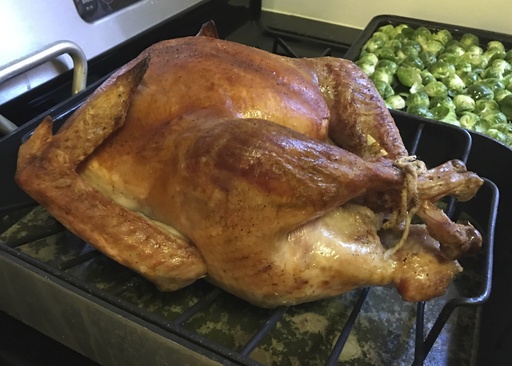
The holiday season has arrived, ushering in a period when many Americans are tasked with preparing elaborate meals, often moving away from their usual simpler fare. This transition can be daunting, especially considering that food poisoning incidences typically increase during November and December, as highlighted by the U.S. Centers for Disease Control and Prevention. Investigations have linked various holiday staples — undercooked stuffing, contaminated turkey, and unsafe gravy from buffets — to past outbreaks of illness, some of which have even resulted in fatalities.
According to Donald Schaffner, a food safety expert from Rutgers University, occasional cooks may find it particularly challenging to manage large meals without encountering hazards that lead to foodborne illnesses. He notes, “Cooking takes longer with large quantities of food and cooling also takes more time.” Schaffner, who co-hosts a food safety podcast titled “Risky or Not?”, along with Benjamin Chapman from North Carolina State University, has shared essential tips to help ensure that holiday meals remain both enjoyable and safe.
**Preparation of the Turkey**
Turkey is almost a mandatory dish for Thanksgiving, with nearly 90% of American hosts planning to serve it, as per the producer Butterball. Nonetheless, raw turkey may contain harmful bacteria like salmonella and campylobacter, necessitating safe handling practices to prevent cross-contamination of kitchen surfaces.
For those using frozen turkey, thawing must occur first. Accepted methods include refrigerator thawing, microwave, or cold running water, according to Schaffner. However, he warns that each method carries specific risks. The U.S. Department of Agriculture recommends roughly 24 hours of thawing for every 4 to 5 pounds of turkey in the refrigerator. If opting for the microwave or cold water methods, it is essential to cook the turkey immediately after thawing. For additional guidelines, consult the USDA’s thawing and cooking calculators.
Importantly, do not rinse the turkey in the sink, despite the habit many cooks may have. Chapman cautions that rinsing can lead to splatter, which spreads bacteria throughout the kitchen. Instead, it’s safer to pat the turkey dry with paper towels, which then should be disposed of, or use a kitchen towel that can be properly sanitized.
**Roasting Guidelines**
Ensuring that turkey is cooked to a safe internal temperature of 165 degrees Fahrenheit is crucial. The most effective way to confirm this is by using a precise digital thermometer placed in the innermost part of the thigh, avoiding contact with the bone. Chapman advises against relying on plastic pop-up thermometers often found in store-bought turkeys, as they may indicate doneness too early. Signs such as golden skin or clear juices are also unreliable for determining the turkey’s safety.
**Handling Side Dishes and Leftovers**
Proper management of side dishes, including mashed potatoes, gravy, and yams, is just as vital as the turkey. It’s essential to keep food out of the “danger zone,” defined as temperatures between 40 degrees and 140 degrees Fahrenheit, where bacteria thrive. Schaffner stresses the importance of maintaining hot foods at high temperatures and cool foods adequately chilled. He recommends refrigerating leftovers within two hours of preparation for optimal safety.
Dense dishes like sliced turkey and gravy should be stored in shallow containers to encourage faster cooling. According to Schaffner’s research, cooling foods in containers no deeper than 2 inches significantly reduces the risk of harmful bacteria development.
**Maintaining Cleanliness**
Strict hygiene practices in the kitchen are one of the most effective ways to prevent foodborne illnesses. Always wash hands thoroughly before food prep and after handling raw poultry. Implement separate cutting boards and utensils for raw meats and fresh produce like vegetables and salads.
Attention to potentially contaminated surfaces is crucial; begin cleaning with soap and water, followed by sanitization with a disinfectant — a two-step approach that is necessary for maintaining food safety.
